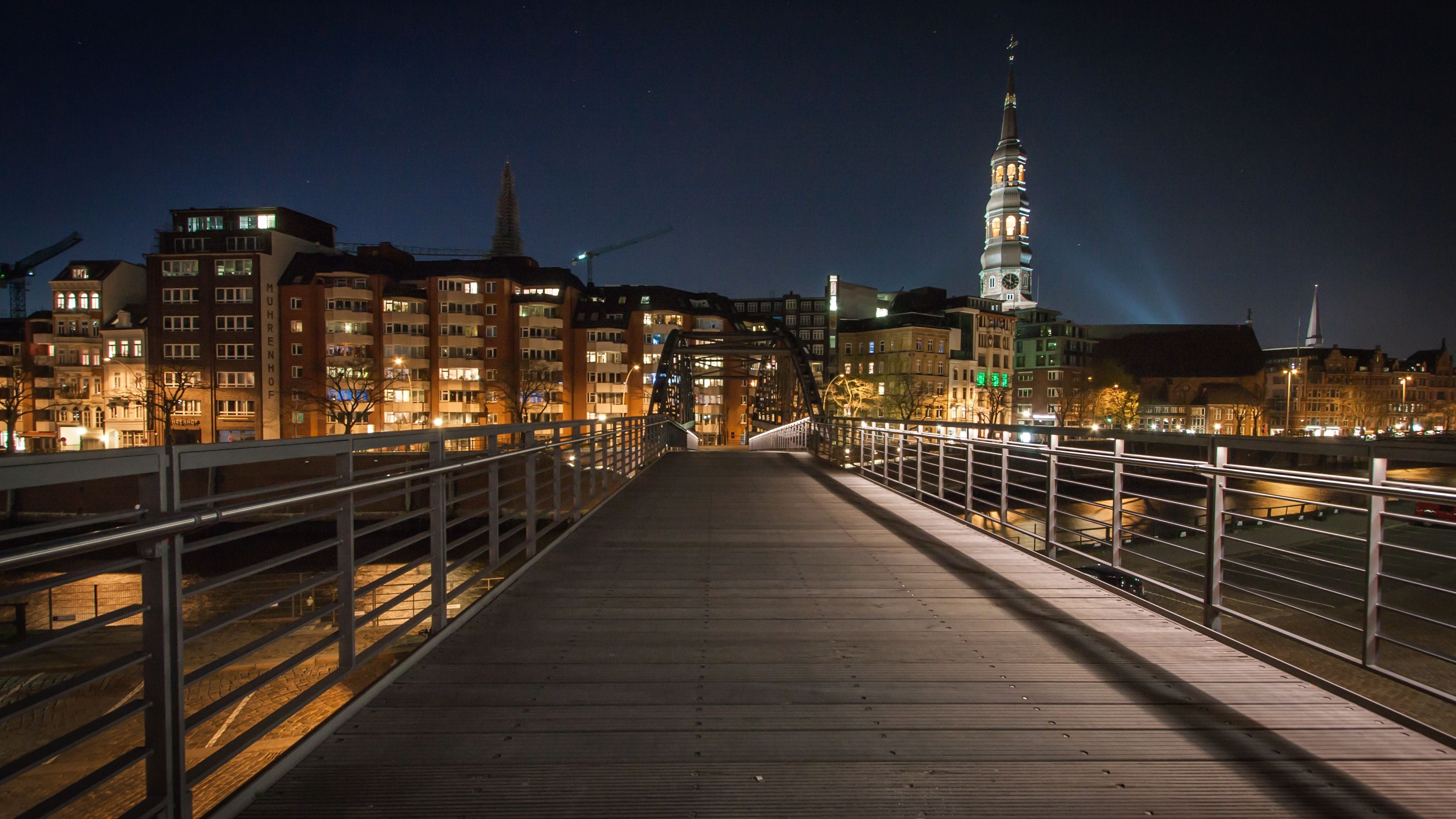Keystone Crossroads goes to Germany; follow along at #kcgermany

The bridge to HafenCity, a development on Hamburg's Elbe waterfront. (John Kraus/Flickr)
We’re headed overseas.
At Keystone Crossroads, part of our mission is to report on solutions to the problems Pennsylvania cities face. Those solutions don’t have to come from within the state, or even the country. What really matters is: do they work or not? And what can Pennsylvania learn from their example?
With that in mind, I’ll spend the next few weeks sending back lessons from cities in Germany.
I’ll be traveling there to participate in a German-American journalist exchange program sponsored by the RIAS Berlin Kommission and the U.S.-based Radio Television Digital News Foundation.
During the trip, I’ll spend several weeks getting to know German cities, including Berlin, Erfurt, Cologne, Dortmund and Hamburg. We’ll publish interviews with German thinkers and leaders about how they’re reimagining their cities and what Pennsylvania cities can learn from those experiences.
The German-Pennsylvanian connection
Germans and Pennsylvania go way back. In 1790, Germans were the second-largest ethnic group in the United States, according to the Philadelphia Free Library. Most of those German immigrants lived in Pennsylvania. At that time, more than a third of the state’s residents were German.
You can still see Pennsylvania’s German roots in the names of various neighborhoods and cities, like Germantown, Philadelphia (founded by German settlers in the late 1600s) and the state’s very own city of Hamburg.
And this isn’t all ancient history. About 26 percent of Pennsylvanians, or 3.3 million people, reported having German ancestry in the 2012 American Community Survey.
You can thank the Germans for some American customs, too. As one example, German immigrants in Lancaster, Pennsylvania introduced the idea of a decorated Christmas tree to the United States, according to the Library of Congress.
And you might not know it, but these days, German cities face a lot of the same challenges as Pennsylvania municipalities. A few examples:
The Ruhr region, in western Germany, has long relied on coal and steel manufacturing for jobs. As those industries have waned, cities in the Ruhr have had to reinvent themselves. These cities’ challenges are very similar to those of Pittsburgh, Reading, Allentown and so many other places in Pennsylvania that have also struggled to adapt to the post-industrial economy.
While on the trip, I’ll be reporting on Bottrop, an old coal city that’s trying to become the greenest in its region. City officials are preparing for a local coal plant, one of the last in Germany, to shut down in 2018.
Other German cities are trying to figure out how to foster entrepreneurship and workforce development among their growing immigrant populations. Does that sound familiar? Reading, Allentown, Pittsburgh and other cities face a similar challenge (and opportunity) as their immigrant population swells. While in Germany, I’ll be learning more about how Berlin, in particular, hopes to integrate these newer residents.
German city planners and officials have had to find ways to repurpose vacant, underused sites on urban waterfronts. One example is HafenCity, a redevelopment project that converted a defunct warehouse district on Hamburg’s Elbe waterfront into residential and commercial space. Many Pennsylvania cities, including Chester, Allentown and Philadelphia, have unused and underused former industrial sites on their waterfronts that they’re planning to develop, and they could learn a lot from Hamburg’s experience. I’ll be sending back lessons about creating this kind of mixed-use campus.
Learning from other places
Cities often find inspiration from examples halfway across the world — and Pennsylvania and Germany have a long history of learning from each other.
Jeff Parks, president of ArtsQuest, the group that runs the Steel Stacks in Bethlehem, got the inspiration for the arts campus when he visited a revitalized former steel mill in Duisberg, Germany in 2002, according to The Morning Call and ArtsQuest.
The German Marshall Fund of the United States (GMF) recently wrapped up a three-year program that sent urban policy experts from five U.S. cities, including Pittsburgh, to cities in Europe. The purpose was to learn about the economic development and urban revitalization successes in these cities and bring that knowledge back home.
A Pittsburgh official who went on the trip told me that Germany encourages collaboration between companies within the same industries. These companies work together to come up with a standard set of skills for various jobs in their fields. Once she got home to Pittsburgh, she brought local companies together for the same purpose.
A delegation of U.S. mayors also visited HafenCity in 2012 to learn about sustainable urban waterfront development.
German officials take similar trips to learn from the United States, including Pennsylvania.
Lessons learned
As we send back lessons from Germany to Pennsylvania, it’s important to remember a couple of things.
For one thing, we’re not saying German cities have all the right answers. We do know that they have had a lot of the same problems, and Pennsylvania could learn from their experiences trying to find solutions.
Also, these cross-cultural exchanges are about inspiring new ideas here at home, not creating an exact replica of some project abroad. Germany of course has different cultural norms, political and financial realities, and infrastructure than the United States and Pennsylvania. We couldn’t do exactly what they’re doing even if we wanted to. But, as with the example of Bethlehem’s Steel Stacks, we can certainly be inspired. Over the next few weeks, I’ll be on the lookout for those inspiring places and projects. Wish me luck — and auf wiedersehen!
You can follow along with the trip through Germany at Keystone Crossroads, @PaCrossroads with the hashtag #kcgermany and on our Facebook page.
WHYY is your source for fact-based, in-depth journalism and information. As a nonprofit organization, we rely on financial support from readers like you. Please give today.


